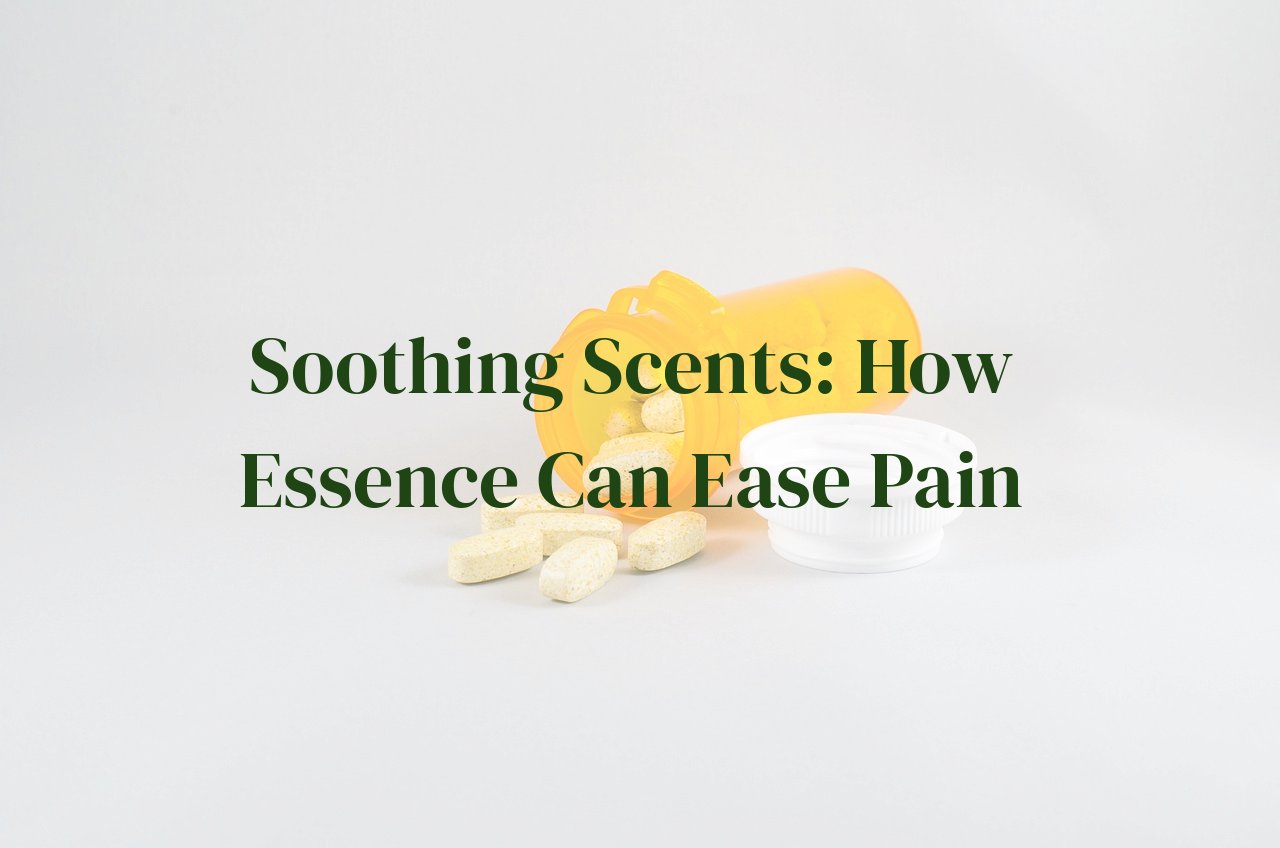
Embark on a sensorial journey where we explore the fusion of fragrances and wellness. This post offers an in-depth look at how the ancient art of aromatherapy plays a pivotal role in alleviating discomfort and pain. Delve into the science and soul behind fragrant oils and their therapeutic effects as we uncover strategies to incorporate them into day-to-day pain management routines.
Readers will gain valuable insights into the potential benefits of aromatherapy, including reduced pain sensation, enhanced relaxation, and improved overall well-being. By tapping into the subtle power of scents, you may find novel and comforting ways to address your pain management needs.
Table of Contents
Unraveling the Essence: Understanding Aromatherapy
Aromatherapy, an ancient practice with roots winding deeply through the annals of time, stands today as a beacon of serenity in our chaotic world. At heart, it is the art of wielding the volatile oils extracted from flowers, leaves, bark, stems, and roots – known colloquially as essential oils – seeking to harmonize, balance, and promote the health of body, mind, and spirit. Harnessing the power of these essences, aromatherapy wields an ethereal toolset gifted by nature itself.
Central to understanding this practice is the recognition of the olfactory system’s direct hotline to our brain’s limbic system. This ancient structure, nestled deep within our cerebral folds, rules over a kingdom of emotions, memory, and autonomic functions. Here is where the magic happens: when inhaled, the molecules of essential oils cross the sentry-like blood-brain barrier, whispering biochemical messages that can calm, invigorate, or soothe.
The essential oils themselves are a kaleidoscope of molecular complexity, with each essence boasting a unique profile of active compounds. Lavender, with its linalool and linalyl acetate, may exert sedative and analgesic properties, while eucalyptus – rich in 1,8-cineole – is lauded for its anti-inflammatory prowess. It is in this diverse chemical tapestry that the potential for pain relief lies, each oil a distinct character in the holistic narrative of healing.
Dedicated distillation processes such as steam distillation, cold pressing, or solvent extraction, birth these potent oils, subsequently bottled with precision and care. Their applications vary widely, from topical to inhalation and, very selectively, oral consumption. Preserving the integrity of these oils is crucial, for therein lies their potency – a synergy of elements finely tuned by nature over millennia.
Finally, beyond the oils themselves, aromatherapy thrives on the individual’s subjective experience, where the placebo effect and genuine biochemical reactions dance inseparably. It is not just a science but an art, infused with personal history, emotional states, and an ever-evolving understanding of its role in complementary medicine. To unravel aromatherapy is to embark on a journey where science interlaces with the poetic, and where each breath can be an aroma-infused step towards tranquility and relief.
Essential Oils for Pain: What the Research Says
The fascinating world of aromatherapy boasts a spectrum of essential oils, each with its unique properties and potential benefits. Yet, amid anecdotal testimonies, researchers have sought to unveil the efficacy of these oils in pain relief. Lavender, known for its calming and sedative effects, has been extensively studied. A 2016 review published in the journal ‘Pain Research and Treatment’ pooled evidence from various studies and suggested that inhaling lavender oil may help reduce pain associated with migraine headaches, osteoarthritis, and postoperative discomfort.
Another powerhouse in the essential oils domain is peppermint. Containing menthol, which has a cooling effect that can help soothe muscle pain and reduce headache severity, peppermint oil has garnered attention in clinical circles. The ‘American Journal of Essential Oils’ highlights its topical application for tension headaches and its potential benefits when massaged into sore muscles, despite the need for larger, more comprehensive studies to substantiate these initial findings.
Meanwhile, ginger oil emerges as a warm, stimulating alternative, with research indicating its effectiveness in diminishing the severity of chronic knee pain when used in aromatherapy massage, as per a study in ‘Complementary Therapies in Medicine’. The anti-inflammatory properties of ginger hold promise but remind us of the complexity of pain management and the variables involved in individual responses to treatment.
Tea tree oil, although less commonly associated with pain relief, has been explored for its anti-inflammatory and analgesic effects. A study published in ‘Phytotherapy Research’ suggests that tea tree oil, in combination with lavender and peppermint, may offer synergistic effects that could aid in managing pain and inflammation, pushing the boundaries of multimodal pain-relief strategies.
Research into essential oils is an evolving field, with a blend of both positive outcomes and calls for more rigorous investigation. It is essential to understand that while preliminary research is promising, essential oils are not a panacea. They should be considered as complementary options, part of a broader, integrative approach to pain management that includes conventional medicine and lifestyle modifications.
Scent-sational Strategies: Incorporating Aromatherapy into Pain Management
Integrating the essence of aromatherapy into pain management can be a transformative experience, with the potential to alleviate discomfort and enhance wellbeing seamlessly. One of the first strategies is to personalize the approach by selecting essential oils that resonate on a sensory level with the individual. Lavender, for example, is not just a floral treat to the senses but a time-honored ally against headaches and muscle tension, known for its calming properties.
Creating an aromatherapy toolkit is another method. Combine various essential oils like eucalyptus for its anti-inflammatory properties, peppermint for its cooling sensation, and rosemary for improving circulation. This customized blend can be applied topically with carrier oils or diffused into the air to create a healing ambiance.
Utilizing aromatherapy during meditation or relaxation exercises can amplify the benefits of both practices. Imagine inhaling the soothing scent of chamomile while practicing deep breathing exercises, enhancing the body’s natural pain-relief mechanisms through both olfactory stimulation and centered mindfulness.
Incorporation into daily routines is key. Using a diffuser or aromatherapy roll-ons can integrate pain-relieving scents throughout the day, from a bright citrus to uplift and reduce stress-related pain to the warmth of ginger to ease chronic aches. Regular and consistent use ensures that aromatherapy is not only a treatment but a preventative measure, infusing every moment with potential relief.
Engaging in a therapeutic massage with aromatherapy oils marries the tactile benefits of massage with the analgesic properties of aromatic extracts. A therapist skilled in both massage and aromatherapy can address specific pain points, combining the power of touch with the soothing influence of scent, fostering a deep sense of relief and relaxation.
Lastly, education on the synergy of scents can empower individuals to make informed choices about the fragrances they use. Knowing which oils blend harmoniously for their anti-inflammatory and analgesic effects encourages a proactive role in one’s own pain management journey.
Each of these strategies offers a pathway to weave the alliance of fragrance and therapy into the fabric of everyday life, turning pain management into a more comforting and holistic experience. Mindfully embracing the role of aromatherapy opens a door to a world where relief is not just sought but also savored through the power of scent.
Inhaling Comfort: Real-life Success Stories of Aromatherapy in Pain Relief
In a world where the ubiquity of pain casts a shadow over many lives, aromatherapy’s fragrant tendrils weave stories of palpable relief and comfort. Amidst the plethora of anecdotal evidence, certain narratives stand out not only for their emotive potency but also for the sheer transformative impact of essential oils on pain perception and management.
Consider Jane, a middle-aged teacher with chronic migraines that blurred her focus and dampened her spirit. Embarking on a journey with lavender essential oil, Jane discovered a surprising ally. Inhaling the floral scent before the onset of a headache, she found her attacks becoming less frequent and less severe. As lavender’s calming properties embraced her nervous system, the crippling pain that used to dominate her days began to fade, unveiling more serene chapters of life.
Then there’s Michael, whose battle scars from service were not just physical. Plagued by joint pain and haunted by stress, eucalyptus oil’s sharp, minty presence became his solace. The cool, almost tingling sensation upon application accompanied by deep inhalations acted as a catalyst in his recovery — dulling pain’s edges and soothing a turbulent mind.
Stories such as these are complimented by findings from hospice care where peppermint oil has made an indelible mark. Nurses recount their use of the menthol-rich essence for patients grappling with terminal illness. One such patient, Sophia, found her nausea quelled and the burning ache of neuropathy eased under peppermint’s invigorating care, rekindling hope in her heart’s corners.
The quiet progression of Rose’s rheumatoid arthritis had stolen many joys, until she encountered ginger oil. This warm, spicy essence became her morning ritual, its anti-inflammatory properties helping to unlock stiff joints and diminish discomfort. She credits these moments of aromatic serenity with restoring her ability to embrace her grandchildren without recoiling from pain.
Through this mosaic of personal triumphs, the true essence of aromatherapy emerges — not as a panacea, but as a symphony of scents offering solace in the relentless pursuit of pain relief. While science seeks to unravel its mysteries, the very air carries whispers of those who inhaled comfort, softly aligning life’s rhythm with the soothing cadence of essence.
The Fragrance of Caution: Safety Tips for Using Aromatherapy
Embarking on a sensory journey with aromatherapy can often seem like a natural and harmless way to ease pain, but it’s imperative to tread lightly and be mindful of the potential risks and proper usage. The essence of caution is not to be underestimated in the pursuit of pain relief. As we delve into the prudent practices for using aromatic oils, let’s inhale the wisdom that ensures safety harmonizes with serenity.
First and foremost, understanding the potency of essential oils is crucial; they are highly concentrated and should be respected as such. Direct application to the skin is a no-go without proper dilution. A carrier oil, such as sweet almond or jojoba, is not just a companion but a protector, reducing the likelihood of skin irritation and systemic toxicity. When diluting, adhere to guidelines and err on the side of caution, cherishing the adage ‘less is more’.
The variegated nature of these oils also means that some are photosensitive, making your skin more susceptible to sunlight. With oils like bergamot or lemon, shade becomes your ally. Avoid direct sunlight or UV rays for up to 12 hours after application to prevent adverse reactions that might snuff out the light of comfort you seek.
Furthermore, the bouquet of benefits that aromatherapy offers does not extend equally to all. Vulnerable groups, specifically pregnant women, children, and those with pre-existing conditions, such as epilepsy, must engage with aromatherapy under professional guidance. The same holds true for individuals with allergies or asthma; a sniff may be more than just a whiff but a trigger for respiratory distress.
Last but not least, quality cannot be compromised. Counterfeit or impure oils are akin to wolves in sheep’s clothing, potentially wreaking havoc rather than providing healing. Authenticate the pedigree of your oils by procuring them from reputable sources and scrutinizing their purity. No pain relief is worth the price of compromised integrity and safety.
In essence, a fragrant drop of caution is the secret ingredient to a pain relief concoction that’s both soothing and safe. Let’s embrace aromatherapy with an informed and gentle touch, so the symphony of scents can play a role that’s beneficial, not baneful.
Conclusion
As we come to the end of this aromatic exploration, it’s clear that while aromatherapy is not a cure-all, it offers a complementary approach to traditional pain relief methods. Embracing the gentle power of scents can lead to a more serene and comfortable state of being. May your journey through the world of essential oils bring a breath of relief and a whisper of tranquility to your life.



